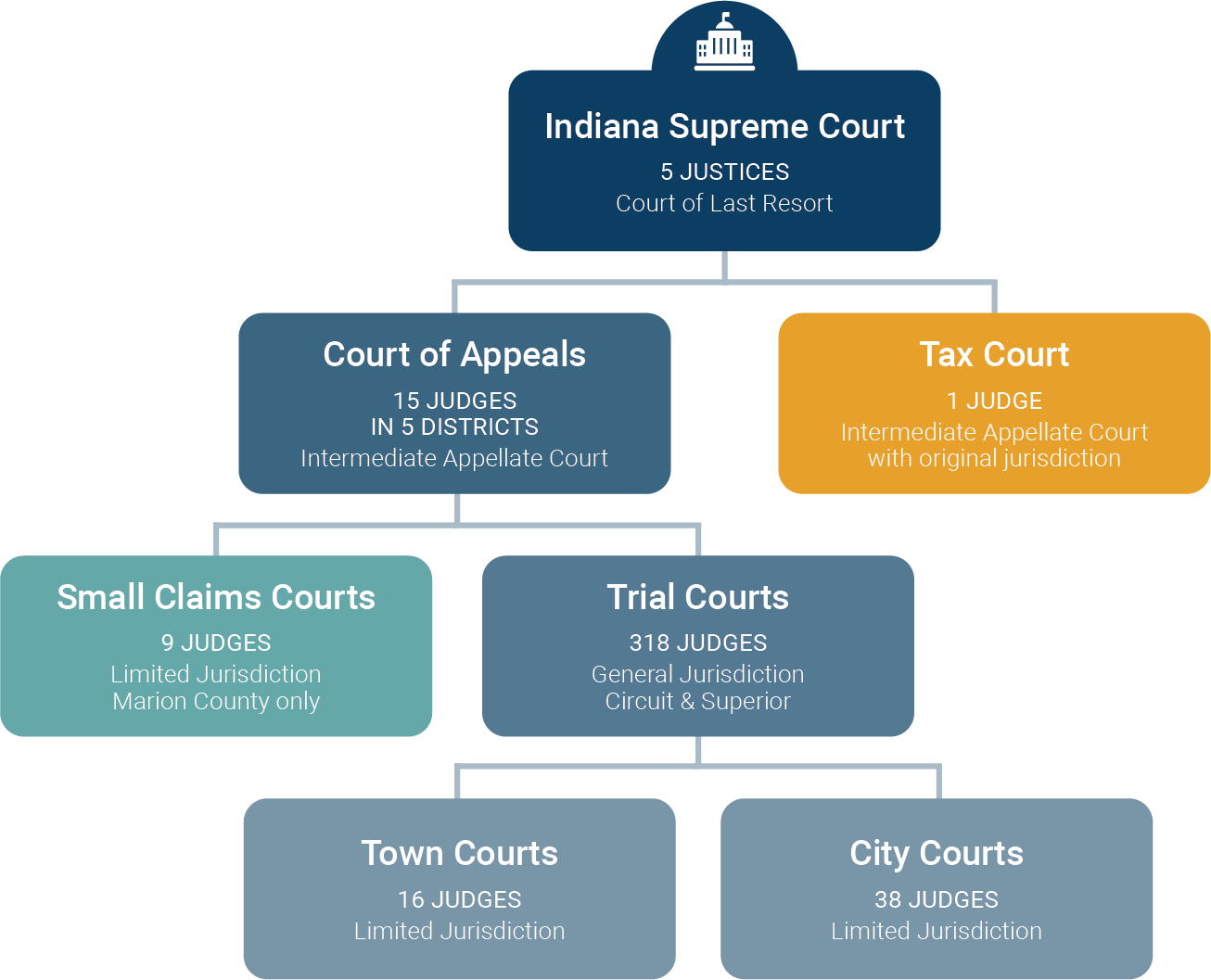About the judicial branch
The Indiana Constitution divides state government into three branches: the Legislative, the Executive, and the Judicial. The Constitution provides that the judicial power of the State is vested in a Supreme Court, a Court of Appeals, Circuit Courts and such other courts as the General Assembly may establish (Indiana Constitution Article 7§1). In 1970, the voters of Indiana approved a constitutional amendment providing for merit selection and retention of Indiana Supreme Court justices and Indiana Court of Appeals judges.
The first court in the Indiana Territory consisted of three judges appointed by the Governor in 1800. Today, the Indiana court system has evolved into a system of justice that is sophisticated and complex. It consists of different levels of courts serving different functions and over 575 judicial officers hearing more than 1.8 million cases each year!
There are two primary levels of Indiana state courts: trial courts and appellate courts. The Supreme Court of Indiana, the Court of Appeals of Indiana, and the Indiana Tax Court are appellate-level courts. For the most part, appellate courts only handle cases that have already been decided in a trial court. The person who lost at trial wants the appellate-level court to reconsider the case because they wish to challenge the outcome.
In Indiana, there are three different kinds of trial courts: circuit courts, superior courts, and local city or town courts. Though these courts have different names, the trial courts are actually more alike than they are different. Trial courts have different names primarily due to accidents of legislative history and local custom, not true differences in the nature or purpose of the courts. The cases these courts hear can vary tremendously from county to county.
Glossary of legal terms
Structure of Indiana courts

